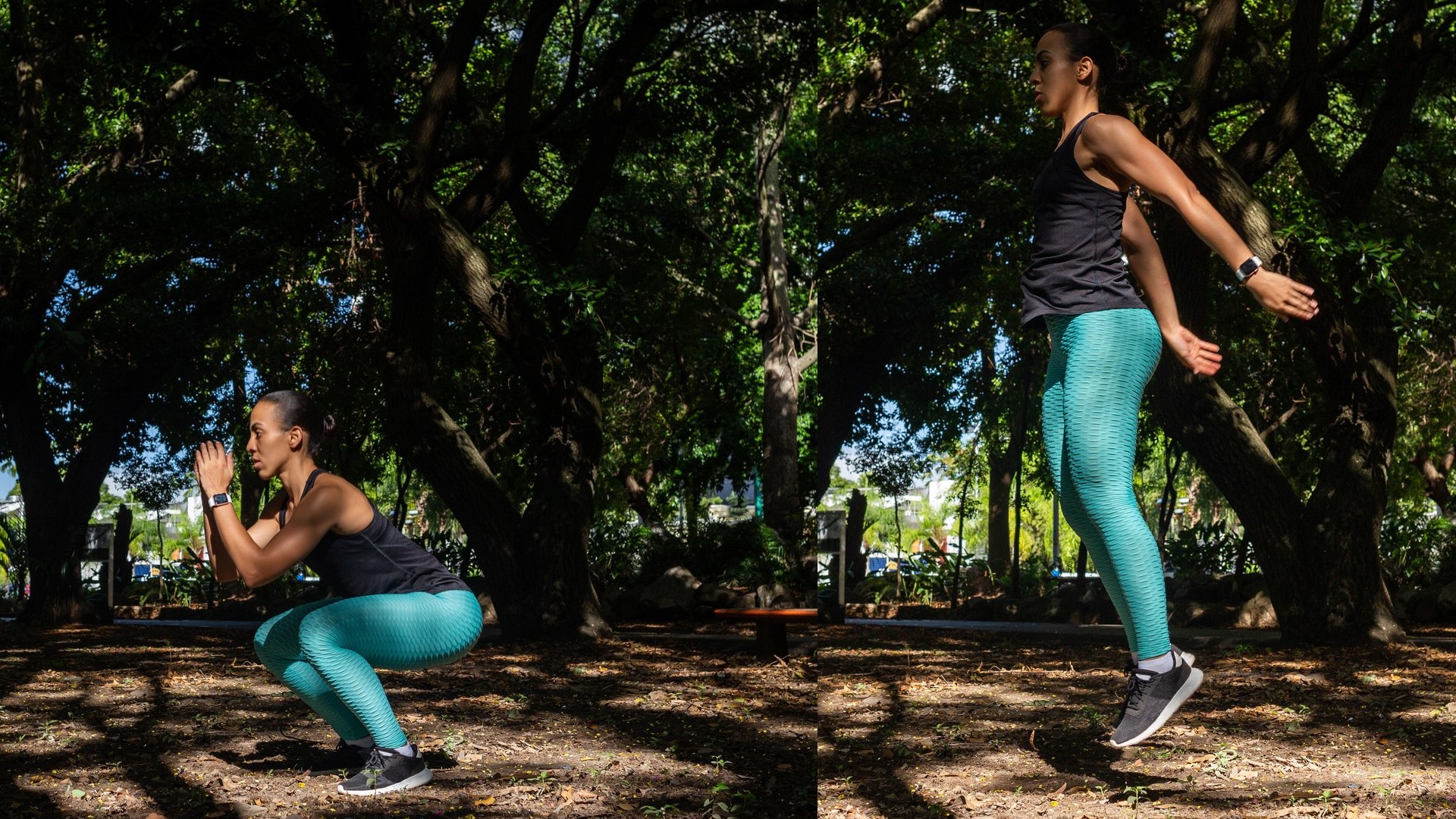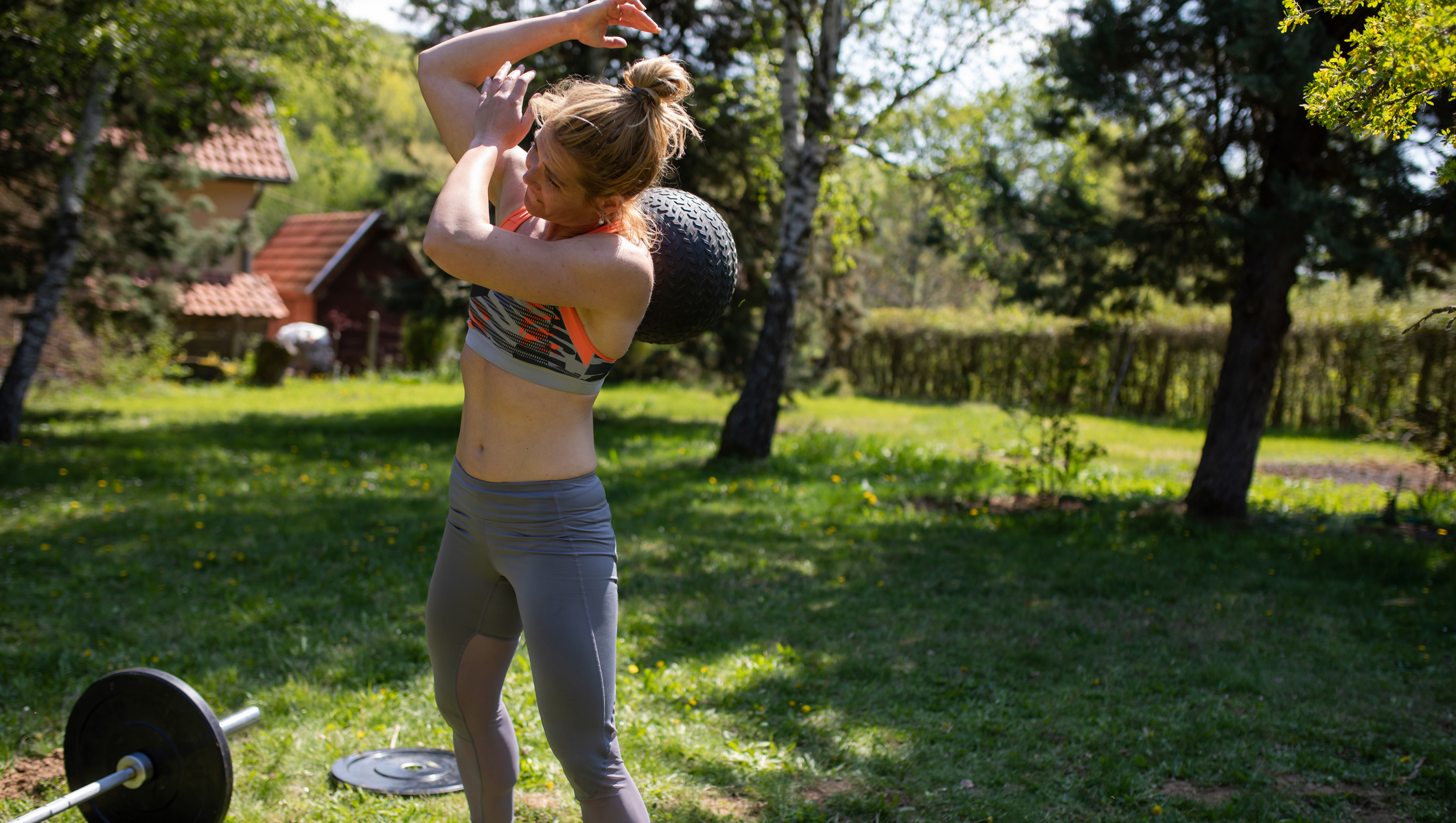How To Do Squat Jumps And Build Powerful Legs
Spring your squats to the next level with our form guide, rundown of the benefits and variations to try

We’ve waxed lyrical about the standard squat on many occasions and we’re about to do so again, because the squat is a foolproof way to strengthen your legs and glutes, as well as working your core muscles.
You could do squats for the rest of your life and it’d be time well spent, but to up the ante you should also consider the jump squat. Not only will adding in a jump spice up any training sessions that are starting to get dull, it also helps you build the explosive power that will be a boon in all of your sporting endeavours, while also increasing the cardiovascular demands of the exercise. Because of this ability to send your heart rate rocketing, the jump squat is a superb choice for HIIT sessions.
Squat Jump Benefits
Squat jumps are plyometric, which means they involve an explosive movement – the jump bit, basically. Doing this will increase your ability to generate power, and this kind of explosive strength translates directly into many sports, which is why plyometric exercises feature prominently in sports training.
The addition of a jump also ramps up the cardiovascular demand when compared with the standard squat, which is why squat jumps are a popular addition to HIIT workouts. They are a surefire way to raise your heart rate quickly, and work well as part of a workout finisher as well.
All the muscles worked in the classic squat are targeted by squat jumps, which means most of the lower body and your core, with the quads and glutes doing the bulk of the work.
How To Do the Squat Jump

Stand with your feet about shoulder-width apart, toes pointing slightly outwards. Inhale as you lower your hips back and down gently into your standard squat, aiming to keep your thighs slightly higher than your knees. Then, exhale and explode into the air with as much power as you can, driving hard with your legs and pushing yourself further upwards with the balls of your feet. Your body should be poker-straight while you’re in the air, and your hands should be above your head – keep your core engaged to prevent your body from rotating. Land with your legs slightly bent before controlling your gentle descent back down into the squat position.
Squat Jump Variations
Box jump
Once you’ve mastered the jump squat you can take it up a level (quite literally) by jumping onto a platform like a box or bench. Stand facing a box, lower into a squat, then leap up and land softly on both feet. Pause for a second, then step back down. Use a box that’s around 50cm high while you get used to the exercise, then increase the height to up the challenge. For reference, the Guinness World Record for a standing jump is a truly remarkable 1.7m.
Get the Coach Newsletter
Sign up for workout ideas, training advice, reviews of the latest gear and more.
Weighted jump squat

You can also try doing jump squats while holding weights to increase the difficulty of the exercise, but keep it light – trying to leap up while holding massive dumbbells will probably pull your body out of position in the air. If you are struggling to remain in control, practise rocking on the balls of your feet as you come out of the squat rather than leaving the floor. This should help you get used to the movement and ensure you maintain your form in the full exercise.

Nick Harris-Fry is a journalist who has been covering health and fitness since 2015. Nick is an avid runner, covering 70-110km a week, which gives him ample opportunity to test a wide range of running shoes and running gear. He is also the chief tester for fitness trackers and running watches, treadmills and exercise bikes, and workout headphones.









